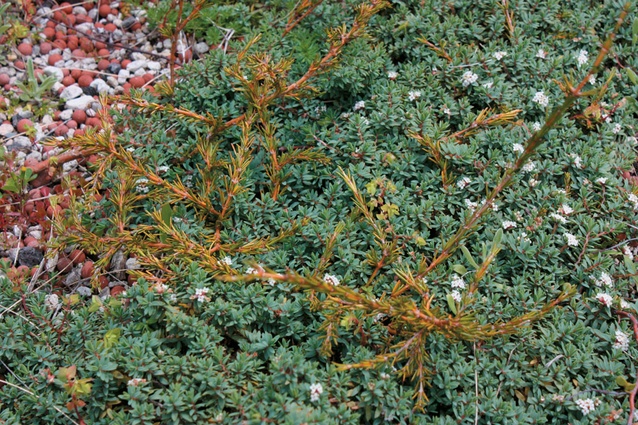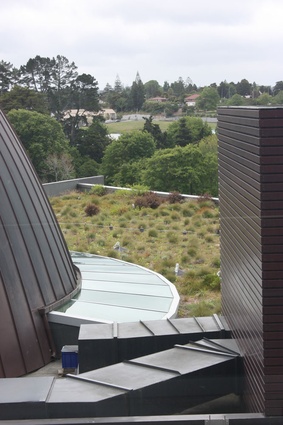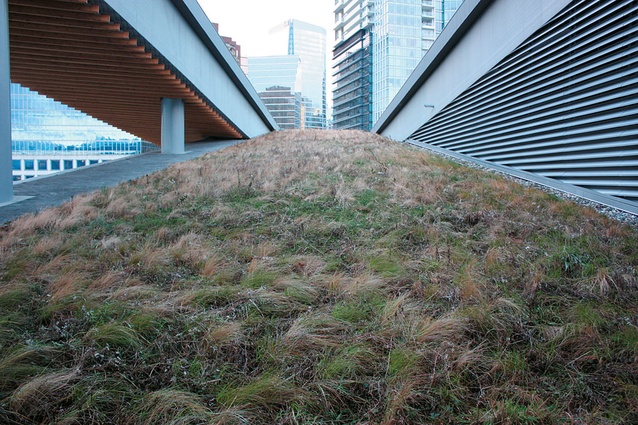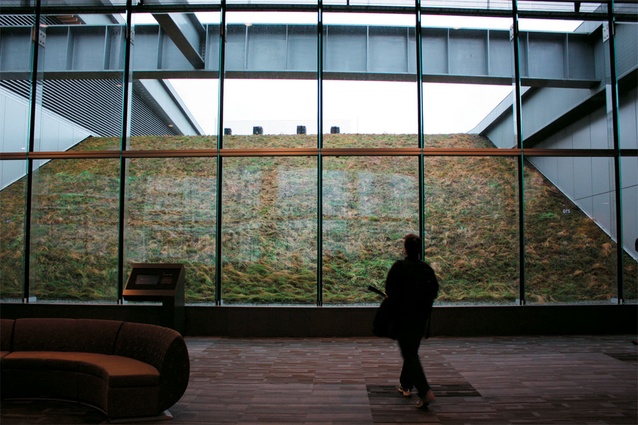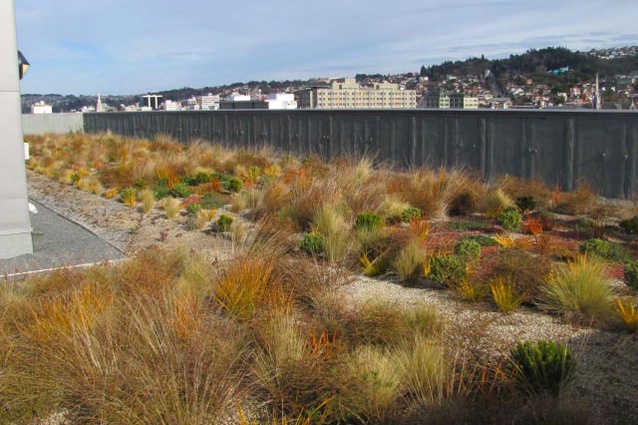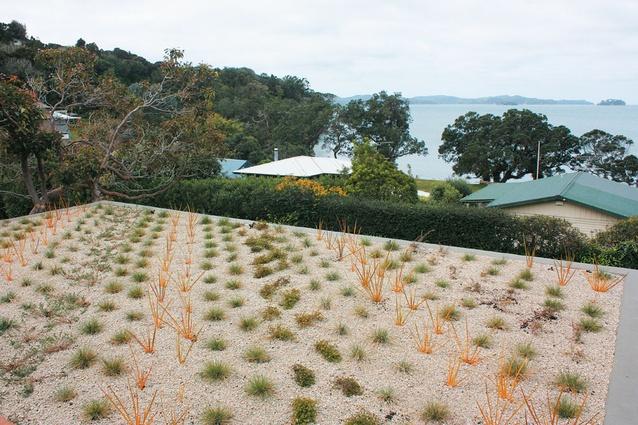Habitats on high
The living roof phenomenon and its relevance to New Zealand. Is it time to grow up – and look up – and take every opportunity for biodiversity and environmental enhancement?
The glistening water of Coal Harbour provides the backdrop to a shimmering golden field of Pacific Northwest coastal grasses and perennials. A bird of prey soars overhead clutching a small native field mouse in its talons. Something distracts, the grip is loosened and the mouse is dropped onto the field to live another day, digging a home in the soil under the grasses and feeding on seed heads, happy in its natural environment. The only anomaly to this story of survival is that it is occurring three storeys above ground and in the bustling downtown centre of the largest city in British Colombia – Vancouver. It is not a natural environment at all, but a 6.4 acre living roof supporting a grassland reference habitat built atop the new convention centre, now home to a range of native insects and mammals (some of which are believed to have colonised the roof as described above). This anecdote of ecology in action in our urban environments is an example of one of the myriad of exciting potentials that living roofs hold for our cities.
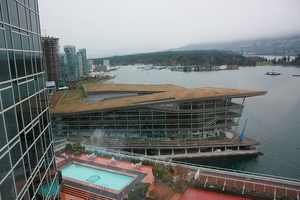
Talk of living roofs, particularly on commercial buildings, in New Zealand is in its infancy and is often met with scepticism in terms of its potential as a realistic building option with long term contributions to urban habitat, stormwater and sustainable building outcomes. Other cities, such as London, Stuttgard, Bern and Singapore, have seen the future potential and put in place incentives and policies which in many cases will see all new commercial buildings requiring a living roof.
New Zealand’s complacency in addressing biodiversity loss and environmental degradation was highlighted in a recent comment from ecologist Mike Joy, who notes that New Zealand has been re-confirmed as one of the world’s worst biodiversity losers and that our status continues to deteriorate. This dire placement in the world biodiversity hierarchy confirms that any and every opportunity for biodiversity and environmental enhancement should be taken. Living roofs provide just such an opportunity, beyond the more common place terrestrial approaches, particularly in our fast growing urban environments where space for plants (particularly wild plants) at ground level is severely constrained.
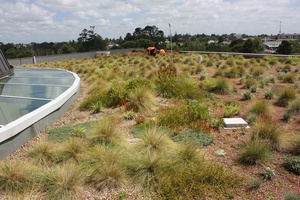
This potential was highlighted by an international group of designers, scientists and politicians at the Cities Alive conference held in Vancouver, last November, where the most recent living roof and green wall initiatives, research and projects were presented and discussed. The overwhelming message from the four-day event was that alongside the known stormwater and thermoregulatory benefits that ecological contributions made by living roofs are proving to be more significant than expected. The biodiversity of a living roof, both in its flora and fauna, is the key catalyst for the level of efficiency in energy storage, temperature reduction and maintenance of nutrient cycles. Living roofs offer a living library of adaptive strategies to assist with ecosystem functions and temperature modification. In cities, space for leaf area (the main thermoregulatory mechanism on earth) is reduced due to the requirement for services and buildings. Research has shown that often the higher the diversity of an ecosystem, the cooler the surface temperature and the greater the efficiency in utilising energy, an important contribution in a world of changing climate and resource depletion. As such, in the vegetatively depauperate environment of the city, living roofs extend the potential to use these functions.
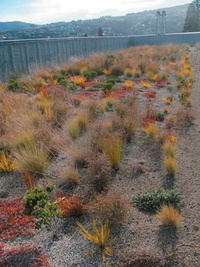
In New Zealand, the expansion of the urban palette of biodiversity should include consideration of living roofs that reference our unique and adaptable natural ecosystems, using indigenous plants and local substrate mixes that will build biodiversity and the inherent efficiency and contributions these roofs will have. This will likely require adaptive design strategies, a slightly deeper substrate than is required for the ubiquitous sedums, (Europe and North America’s standard living roof plant genus) and irrigation in drought periods. Indigenous living roofs have been implemented in New Zealand, with variable success, but those that have worked well, show our palette can be broadened to include indigenous components.
The jury is no longer out and world-wide research continues to confirm that living roofs provide urban habitat, both building and city infrastructure and aesthetic benefits within the predominantly hard surface face of our urban environments. In New Zealand we need to grasp any and every opportunity we can to secure better outcomes for our environment.
What lost potential then, when you compare the beauty and gravitas of the Vancouver Convention Centre with its associated living roof (further enhanced by its iconic harbour-side location) with the current building proposals for Auckland’s future core visitor destination – the Auckland Convention Centre. The Native American Indian welcome to the Cities Alive conference threw out the challenge to us as designers: “It is easy to talk and say words, but to make words come alive is our task”.
Let’s get serious about recognising the myriad benefits of living roofs and provide design leadership over apathy. By ensuring our urban environments contribute to urban biodiversity we may at least assist in slowing our biodiversity demise – the complementary side effect being a total beauty overhaul of the elevated landscape of the city.

